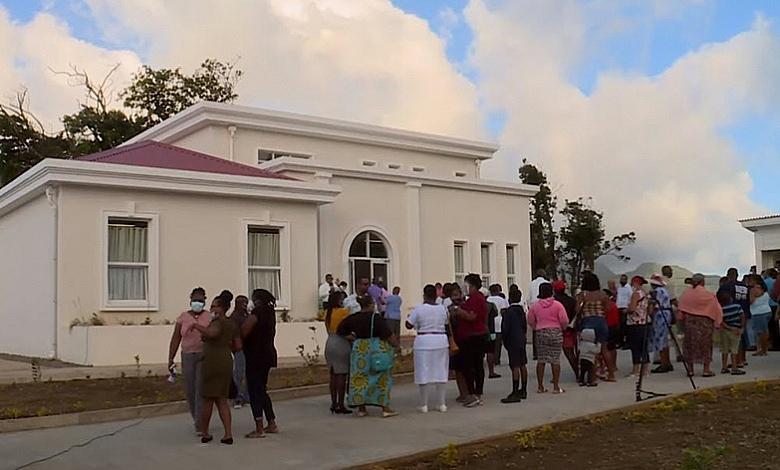Dominica’s Public Health System

Dominica’s public health system highlights the country’s commitment to delivering comprehensive and accessible healthcare services to its citizens. Grounded in a strong primary healthcare approach, the system has evolved over the years, adapting to challenges and embracing reforms to enhance service delivery and resilience.
Structure of Dominica’s Public Health System
The Ministry of Health, Wellness, and Social Services oversees Dominica’s healthcare infrastructure, which is organized into several tiers:
- Primary Care: Delivered through health centers distributed across the island, primary care services are provided at no cost to patients. These facilities offer preventive and curative services, including maternal and child health, immunizations, and management of chronic diseases.
- Secondary Care: The Dominica-China Friendship Hospital, formerly known as the Princess Margaret Hospital, located in the capital city of Roseau, serves as the main referral and teaching hospital. It offers a range of services, including surgery, obstetrics, gynecology, pediatrics, and emergency care. Additional support is provided by smaller hospitals in Portsmouth, Marigot, and Grand Bay.
- Tertiary Care: For specialized treatments not available locally, patients are referred to facilities outside the country, often in neighboring Caribbean nations or further abroad.
Financing and Accessibility
Healthcare services in Dominica are primarily funded through general taxation. As of 2011, government health expenditure was 4.2% of GDP, equating to approximately US$418 per capita. Primary care services are provided free of charge, ensuring broad accessibility. Certain groups, including individuals under 17, pregnant women, the indigent, and those with communicable diseases, are exempt from medical fees.
The government is also part of the Eastern Caribbean Drug Service, a pooled procurement scheme for importing pharmaceuticals and medical supplies, which helps in maintaining the availability of essential medicines at affordable prices.
Health Indicators
Dominica has made notable strides in improving health outcomes:
- Life Expectancy: In 2017, life expectancy was 74.2 years for men and 80.3 years for women.
- Infant Mortality: The infant mortality rate decreased from 17.5 per 1,000 live births in 2000 to 10.7 in 2022, reflecting a 38.9% reduction.
- Maternal Health: As of 2022, 100% of births were attended by skilled health personnel, underscoring the effectiveness of maternal health interventions.
Health System Transformation
In response to challenges such as natural disasters and economic constraints, Dominica has embarked on a health system transformation aimed at achieving universal health coverage. Key initiatives include:
- Infrastructure Resilience: Following the devastation caused by Hurricane Maria in 2017, the government prioritized rebuilding health facilities to be more resilient. New health centers have been constructed with improved structural integrity to withstand future natural disasters.
- Governance Reform: The establishment of the Dominica Hospital Authority introduced a Board of Directors and a Chief Executive Officer to enhance decision-making and operational efficiency within hospitals. This shift allows for more focused management and responsiveness to patient needs.
- Digital Health Initiatives: The implementation of a Health Management Information System aims to transition towards a paperless environment, improving data management, patient record-keeping, and overall service delivery.
Challenges and Future Directions
Despite progress, the health system faces ongoing challenges:
- Human Resources: Recruitment and retention of qualified healthcare professionals remain concerns, particularly in specialized fields. Efforts are ongoing to train and attract medical personnel to serve in both urban and rural areas.
- Financial Sustainability: Ensuring adequate funding to maintain and expand services is critical. The government continues to explore innovative financing mechanisms, including partnerships and investments through programs like the Citizenship by Investment Programme, which has funded the construction of new health centers.
- Non-Communicable Diseases (NCDs): The rising prevalence of NCDs, such as hypertension and diabetes, poses a significant health burden. Public health campaigns focusing on lifestyle modifications, early detection, and management are essential to address this issue.
- Aging Population: With an increasing proportion of the population over 65 years, there is a growing need for geriatric care services and support systems for the elderly.
Community Engagement and Public Health Initiatives
Community involvement is a cornerstone of Dominica’s public health strategy. Local health committees and outreach programs play a vital role in health education, disease prevention, and the promotion of healthy lifestyles. Initiatives such as vaccination drives, nutrition workshops, and fitness programs are conducted regularly to engage the public and encourage proactive health management.
Environmental health is also a priority, with efforts to ensure access to clean water, proper sanitation, and waste management. The Environmental Health Unit conducts regular inspections and public awareness campaigns to maintain high standards of public health and prevent disease outbreaks.
Conclusion
Dominica’s approach to healthcare delivery is both resilient and adaptable, reflected in its public health system. Through strategic planning, infrastructure development, and community engagement, the nation continues to make significant strides toward achieving universal health coverage. While challenges persist, ongoing reforms and a commitment to strengthening the health system position Dominica to effectively meet the evolving health needs of its population.




